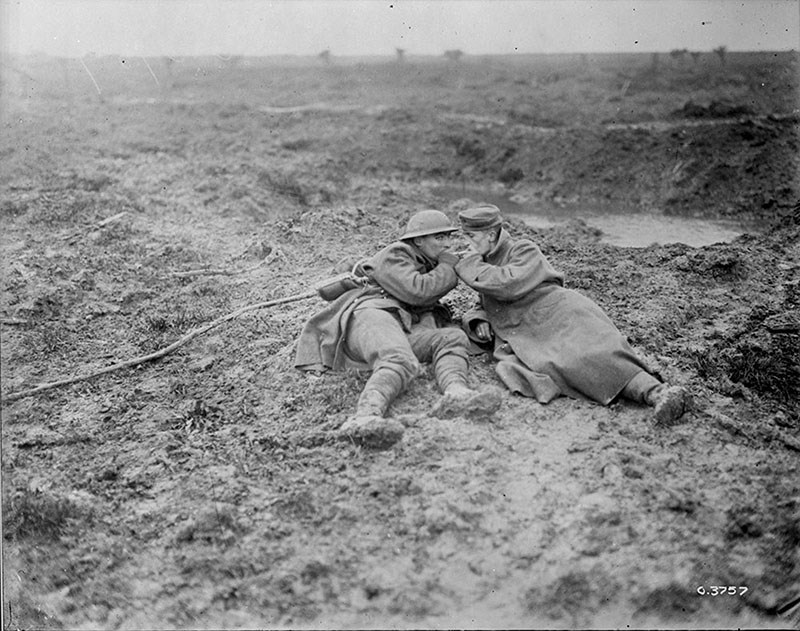Tom St. Amand and Tom Slater
In 2009, when Harry Patch died at the age of 111, he was the last British survivor of the First World War.
For Harry, the nightmares never ceased, although he refused to discuss his battlefield experiences.
But a few days before he died he finally disclosed what had haunted and silenced him for 90 years: Passchendaele.
The Battle of Passchendaele, also known as the Third Battle of Ypres, lasted from July 31st to Nov. 10, 1917.
Envision relentless rain that turned fields into quagmires, with muck so thick men and horses struggled to walk and soldiers who fell into flooded shell holes or collapsed from exhaustion often drowned.
That was Passchendaele.
Imagine trudging uphill into mist and darkness, a battlefield littered with half-buried corpses of fellow soldiers while mustard gas seeped toward you and German shells and bullets exploded all around.
That too was Passchendaele.
The battle, described simply as “absolute hell,” claimed the lives of six Sarnians:
Private George Ansbro
Private William Bendall
Corporal William Coulter
Private Charles Knight
Private James Pirrie
Trooper William Skinner
They were part of Canada's assignment to take Passchendaele, a Belgian ridge on high ground commanded by the Germans. Following a three-month bombardment and repeated attacks with small gains, the Canadians replaced the British, Australians and New Zealanders and were ordered in mid-October to take Passchendaele.
Canadian General Arthur Currie objected, anticipating 16,000 casualties for a piece of land that held no strategic value. But the British High Command overruled the Canadian Commander and insisted taking Passchendaele would salvage the campaign.
And so, 100 years ago this week, on Oct. 26th, Canadian troops began to advance despite unimaginable hardship and horrific fighting conditions. By Nov. 10 they had driven the Germans from the ridge.
Many of the survivors, like Harry Patch, would never be the same.
The service corps had lived up to its informal motto: “The impossible we do immediately; the miraculous takes a little longer.”
Miracles, however, came at a stiff cost. Some 12,000 Canadians were wounded and 4,000 died in action, including six brave soldiers from Sarnia.
They were ordinary young men, these Sarnians, all in their 20s when they fell, some in their teens when they enlisted. They lived on streets that still exist and in houses that still stand. They left behind jobs as labourers and factory hands, as firefighters, machinists and express drivers. Only one was married.
Charles Knight and James Pirrie died the first day of the battle. George Ansbro and William Skinner of Point Edward died within a week of each other. None of the four have a known grave, and each is memorialized on the Menin Gate War Memorial in Belgium.
William Bendall and William Coulter would die in military hospitals from shrapnel and gunshot wounds. Bendall, the oldest at 29, left behind a wife and seven-month-old son. Both men are buried in the Lijssenthoek Military Cemetery, Belgium.
Private Charles Knight was posthumously awarded the Allied Mothers Badge and the Memorial Cross, the latter presented to his mother, Catherine, by the Canadian Government. She would wear it the rest of her life and pass it on to her grandson, Fred. Now, her great-granddaughter, Jodi, treasures it.
When the battle ended, a member of the British High Command drove to the front, advancing as far as possible. Appalled by the scene before him, he began to weep.
“Good God,” he said. “Did we really send men to fight in that?” The man beside him, who had been involved in the battle, replied flatly, “It's much worse farther up.”
That was Passchendaele.
Editor’s note: More stories about Sarnia’s military contributions by Tom St. Amand and Tom Slater will appear in a special edition The Journal is preparing called Sarnia Remembers. Watch for it on Nov. 9.
